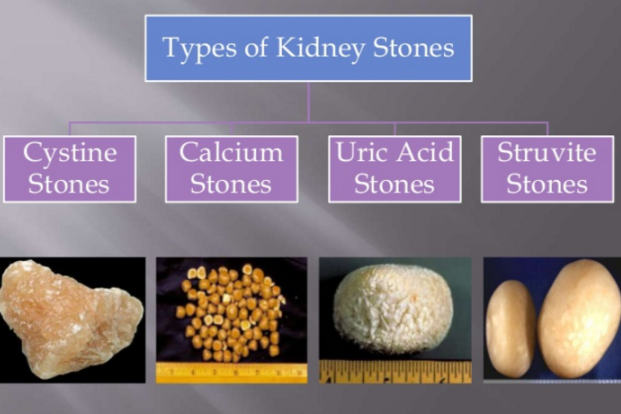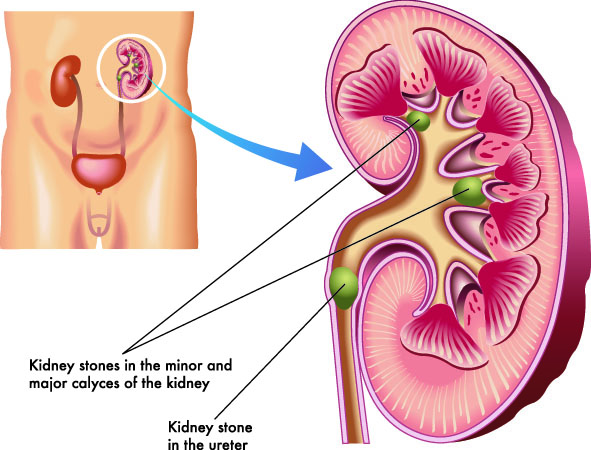Kidney Stones vs UTI: Comprehending the Overlapping Effects and Treatment Techniques
Kidney Stones vs UTI: Comprehending the Overlapping Effects and Treatment Techniques
Blog Article
A Comprehensive Analysis of Treatment Choices for Kidney Stones Versus Urinary Tract Infections: What You Need to Know
The difference in between therapy choices for kidney stones and urinary tract infections (UTIs) is crucial for efficient client management. While UTIs are usually attended to with prescription antibiotics that supply fast relief, the approach to kidney stones can differ considerably based on individual factors such as stone dimension and structure. Non-invasive techniques like extracorporeal shock wave lithotripsy (ESWL) may appropriate for smaller stones, yet larger or obstructive stones frequently require even more intrusive methods. Understanding these nuances not only informs professional choices however also boosts individual outcomes, welcoming a better evaluation of each problem's therapy landscape.
Recognizing Kidney stones
Kidney stones are hard down payments formed in the kidneys from salts and minerals, and recognizing their make-up and formation is critical for efficient monitoring. The primary sorts of kidney stones include calcium oxalate, calcium phosphate, struvite, uric acid, and cystine stones, each with distinctive biochemical origins. Calcium oxalate stones are the most typical, typically resulting from high degrees of calcium and oxalate in the urine. Aspects such as dehydration, nutritional practices, and metabolic problems can contribute to their formation.
The development of kidney stones happens when the concentration of particular materials in the urine boosts, leading to formation. This condensation can be affected by urinary system pH, volume, and the existence of inhibitors or promoters of stone development. Reduced pee quantity and high level of acidity are conducive to uric acid stone advancement.
Recognizing these variables is vital for both avoidance and therapy (Kidney Stones vs UTI). Reliable management approaches may consist of nutritional modifications, raised fluid consumption, and, sometimes, pharmacological interventions. By acknowledging the underlying causes and sorts of kidney stones, healthcare service providers can carry out customized techniques to alleviate reoccurrence and enhance individual results
Summary of Urinary System Infections
Urinary tract infections (UTIs) are usual microbial infections that can influence any type of part of the urinary system, including the kidneys, ureters, bladder, and urethra. Most of UTIs are brought on by Escherichia coli (E. coli), a kind of microorganisms usually discovered in the intestines. Females are extra prone to UTIs than guys as a result of physiological distinctions, with a much shorter urethra promoting much easier microbial accessibility to the bladder.
Symptoms of UTIs can differ relying on the infection's area yet often consist of regular peeing, a burning sensation during urination, strong-smelling or cloudy urine, and pelvic discomfort. In much more serious cases, specifically when the kidneys are involved, symptoms may also include high temperature, chills, and flank pain.
Danger elements for establishing UTIs consist of sex-related activity, certain kinds of birth control, urinary system system problems, and a damaged immune system. Motivate treatment is important to prevent difficulties, including kidney damage, and normally entails anti-biotics customized to the specific bacteria entailed.
Therapy Options for Kidney stones

If the stones are larger or trigger significant pain, non-invasive procedures such as extracorporeal shock wave lithotripsy (ESWL) might be used. This strategy uses sound waves to damage the stones into smaller sized fragments that can be extra easily gone through the urinary system system.
In situations where stones are also big for ESWL or if they block the urinary system tract, ureteroscopy might be suggested. This minimally invasive treatment includes making use of a little range to get rid of or damage up the stones directly.

Treatment Alternatives for UTIs
Exactly how can health care companies successfully deal with urinary system system infections (UTIs)? The primary technique entails a complete analysis of the patient's signs and symptoms and clinical history, complied with by proper analysis testing, such as urinalysis and pee society. These examinations assist determine the causative pathogens and identify their antibiotic vulnerability, assisting targeted therapy.
First-line therapy normally consists of anti-biotics, with options such as nitrofurantoin or trimethoprim-sulfamethoxazole, relying on local resistance patterns. For uncomplicated instances, a short training course of prescription antibiotics (3-7 days) is typically enough. In recurring UTIs, companies might consider alternative approaches or preventative antibiotics, consisting of way of living adjustments to reduce danger variables.
For individuals with complex UTIs or those with underlying wellness issues, extra aggressive therapy may be essential, possibly involving intravenous anti-biotics and further diagnostic imaging to analyze for problems. Furthermore, person education on hydration, hygiene techniques, and sign administration plays an important duty in avoidance and recurrence.
Comparing Outcomes and Effectiveness
Assessing the outcomes and performance of treatment alternatives for urinary system tract infections (UTIs) is important for maximizing patient care. The key treatment for uncomplicated UTIs generally entails antibiotic therapy, with choices such as fosfomycin, trimethoprim-sulfamethoxazole, and nitrofurantoin.
On the other my response hand, therapy results for kidney stones vary dramatically based on stone composition, place, and size. Choices vary from conservative monitoring, such as hydration and pain control, to interventional procedures like extracorporeal shock wave lithotripsy (ESWL) and ureteroscopy. While ESWL has a high success rate for smaller sized stones, problems can develop, demanding additional treatments.
Inevitably, the performance of treatments for both conditions rests on exact diagnosis and tailored techniques. While UTIs usually respond well to prescription antibiotics, kidney stone monitoring may call for a complex strategy. Constant evaluation of therapy end results is critical to improve client experiences and minimize reappearance prices for both UTIs and kidney stones.
Final Thought
In recap, therapy approaches for kidney stones and urinary system system infections differ considerably due to the distinct nature of each condition. Non-invasive approaches such as extracorporeal shock wave lithotripsy are appropriate for smaller stones, whereas bigger or obstructive stones may call for ureteroscopy.
While UTIs are typically addressed with anti-biotics that supply fast relief, the approach to kidney stones can differ substantially based on individual factors such as stone size and composition. Non-invasive approaches like extracorporeal shock wave lithotripsy (ESWL) may be suitable for smaller sized stones, yet bigger or obstructive stones often call for more intrusive methods. The primary kinds of kidney stones consist of calcium oxalate, calcium phosphate, struvite, uric acid, and cystine stones, each with distinct biochemical origins.In comparison, treatment results for kidney stones differ considerably based on stone composition, dimension, and location. Non-invasive methods such as extracorporeal shock wave lithotripsy are ideal for smaller stones, whereas bigger or obstructive stones might call for ureteroscopy.
Report this page